Dell XPS 13 (9345)
The Dell XPS 13 (9345) is stunningly light and very powerful, while offering solid battery life. Is it worth the cash though?
Pros
- Very light
- Great performance
- Good battery life
- Solid keyboard and touchpad
- Sleek and stylish design
Cons
- Limited port selection
- Pricey
Windows on ARM could finally be here. Sure, Qualcomm and Microsoft have been working on Windows on ARM for years now, but to date, those attempts have been largely unsuccessful, offering limited performance and lacking software support in favor of battery life. But that could finally be changing. Almost four years after Apple first launched the original M1 chip, Qualcomm has finally built what looks to be a highly capable ARM chip for PCs, while Microsoft has developed much-improved translation tech in the Dell XPS 13 (9345).
One of the first of these new Qualcomm Snapdragon X Elite laptops is the Dell XPS 13 (9345). The laptop takes what users know and love about the XPS 13 series but powers it with a Snapdragon X Elite chip.
Does the Dell XPS 13 (9345), and more generally, the Qualcomm Snapdragon X Elite, perform? I’ve been using the new laptop for a while now to find out.
Dell XPS 13 9345 specs
| Dimensions | 11.62 x 7.84 x 0.60 inches |
| Display size | 13.4 inches |
| Display type | LCD, OLED |
| Display resolution | 1920 x 1200, 2560 x 1600, 2880 x 1800 |
| Display refresh rate | 30Hz-120Hz, 60Hz |
| Display brightness | 400-500 nits |
| Chipset | Qualcomm Snapdragon X Elite |
| Memory | 16GB, 32GB, 64GB |
| Storage | 512GB, 1TB, 2TB |
| Webcam | 1080p |
| Ports | 2x USB-C 4.0 |
| Battery size | 55Wh |
| Speakers | 4x 2W speakers |
| Charging | 60W |
| Colors | Graphite, Platinum |
| Price | $1,299.99 |
Sleek, stylish, and very light
Dell isn’t reinventing the wheel when it comes to laptop design for the XPS 13 (9345). Indeed, the company reinvented the wheel just a few years ago with the revamped design first introduced in the 2022 XPS 13 Plus, a design that is now available on all XPS 13 models.
That design consists of a flat keyboard bed and no markings for the touchpad in the palm rest. It’s a minimalistic approach that has drawn some criticism, but one that I generally like. I think it looks great, and I never really minded the lack of markings for the touchpad, as I think most people will get used to where it is easily. The display on the device is edge-to-edge and looks great, and there’s a slightly thicker bezel above the display for the 1080p webcam.
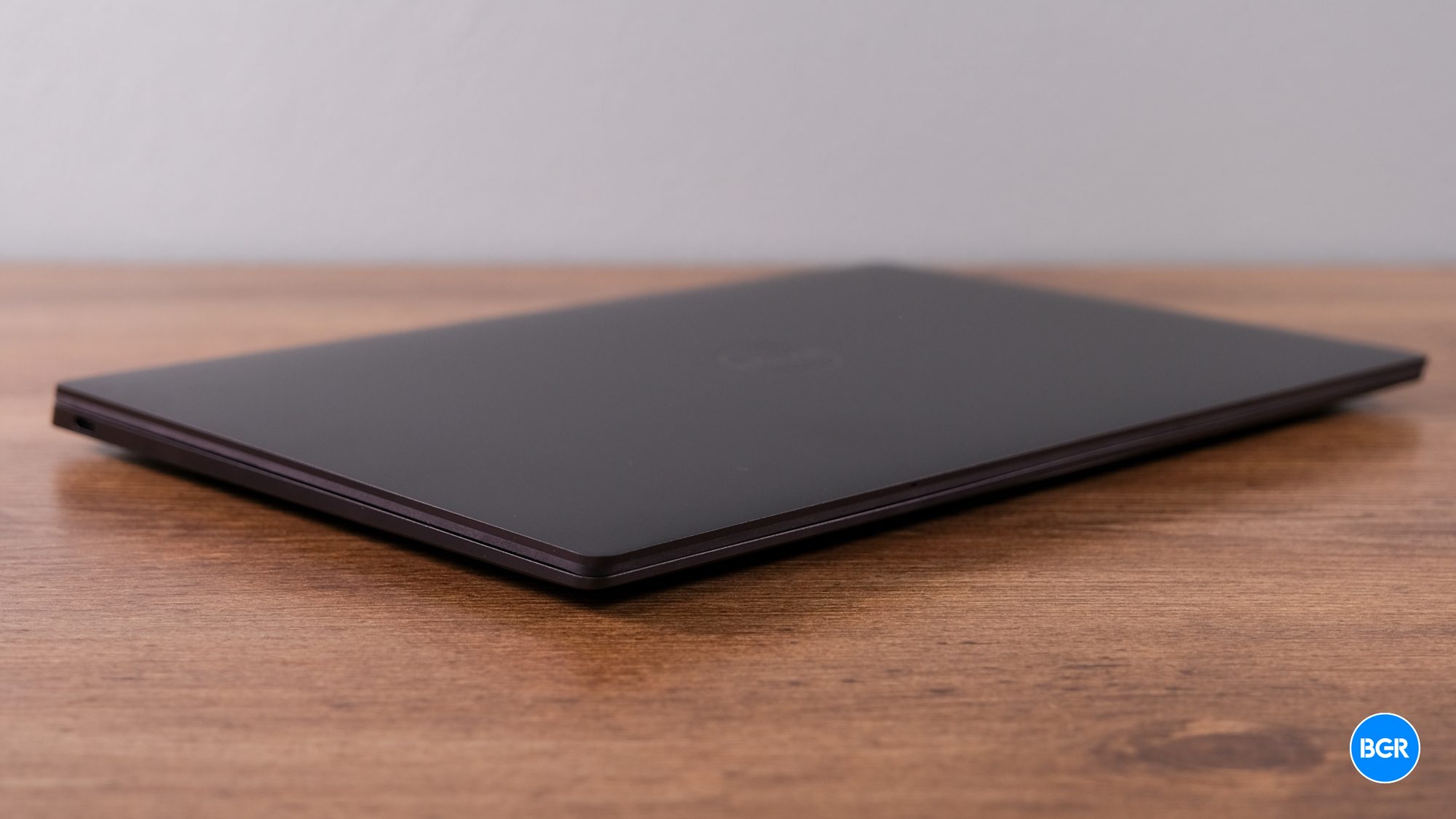
This iteration of the XPS 13 is incredibly light, which is nice, and delivers on one of the major promises of ARM chips for laptops. The laptop weighs in at only 2.6 pounds, and it’s even lighter than the 13-inch MacBook Air, which is already impressively light. It’s thin too, and most will be able to slide it into a backpack or bag and carry it around with ease.
So, what’s the big trade-off for the ultra-thin design? Apparently, it’s port selection. There are only two ports on the XPS 13 (9345), and they’re both USB-C 4.0 ports. If you plug in the laptop, you’ll use up one of those ports, leaving only one as a usable port in many scenarios. That’s pretty disappointing. I would have at least liked to see another USB-C port or two, if not other ports as well. You won’t even get a headphone jack.
Still, the overall design of the XPS 13 (9345) is a good one. It’s very thin, very light, and very premium feeling.
A solid display, but not the best
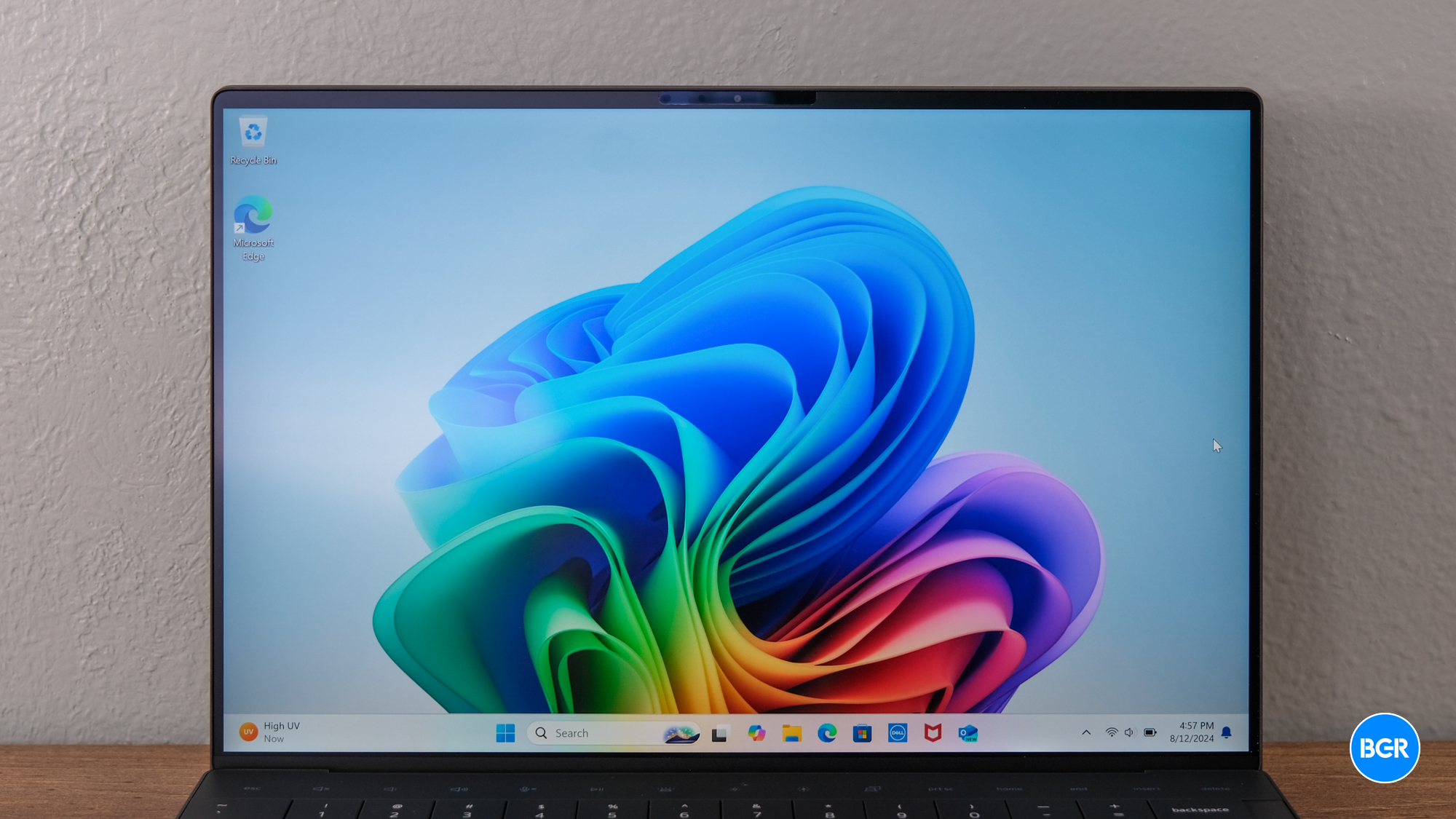
The XPS 13 (9345) comes with a few different display options, ranging in display type and resolution. Our review model has the entry-level display, which has a 1920 x 1200 resolution and a refresh rate that varies from 30Hz to 120Hz. It is not a touchscreen.
Despite being the entry-level display option, I found that the screen looked fine. It got reasonably bright, and easily bright enough for the majority of use, including outdoors. The contrast isn’t excellent, as it likely would be on the OLED option, so the experience of watching movies and gaming on the laptop isn’t going to be as impressive as some might expect. That said, it’s easily good-looking enough for productivity use.
A well-designed keyboard and responsive touchpad
I quite like the keyboard and touchpad on offer with the XPS 13 (9345). The keys on the keyboard are well-spaced and big enough to make typing easy, and they offer more travel than they look like they would, considering the flush design. The keys aren’t overly clicky, but they’re not too mushy either, and most will get used to the feel relatively easily. I didn’t love the fact that the media, volume, and screen controls are capacitive buttons, but to be fair, I didn’t experience any major issues with them.
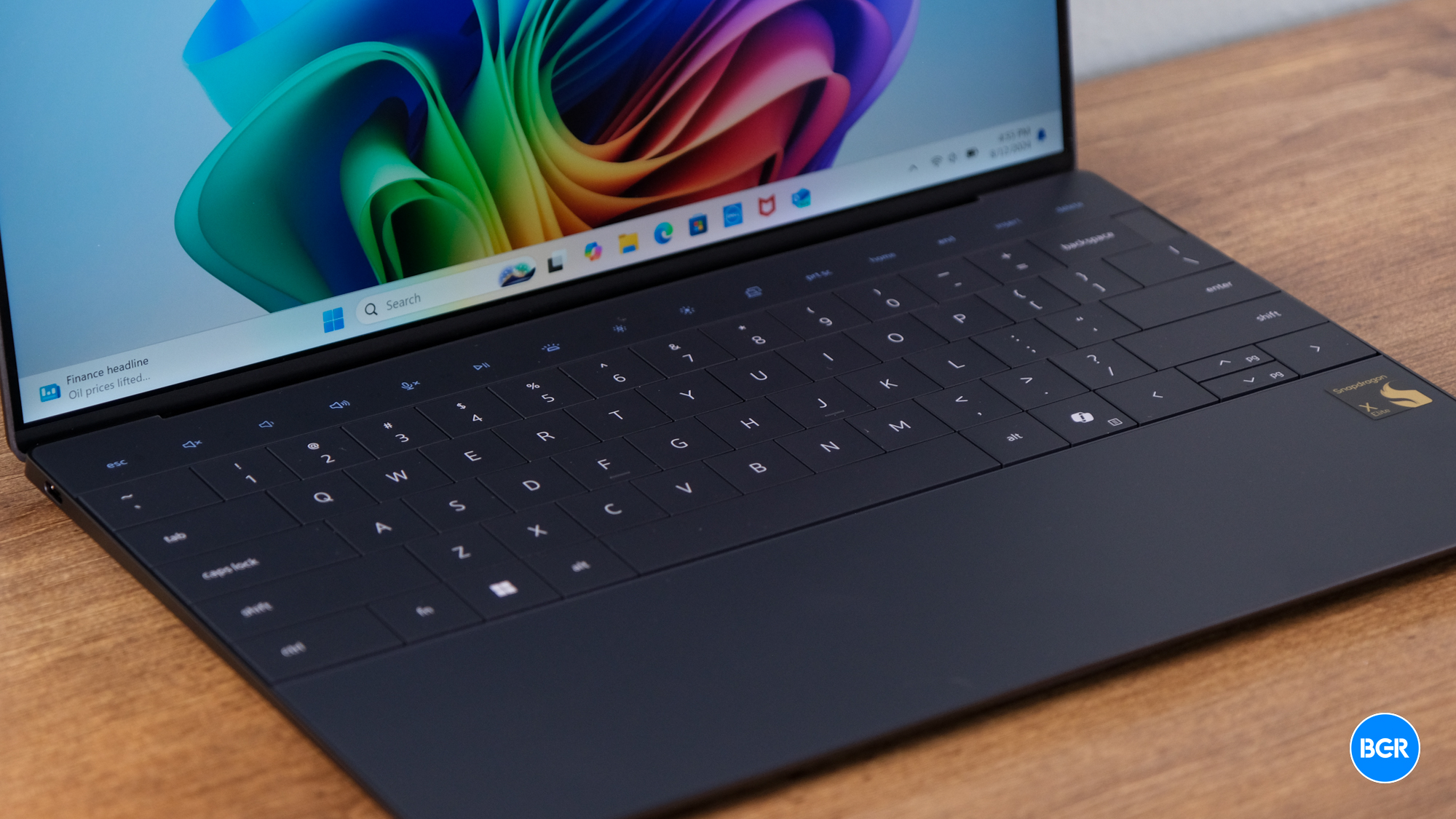
The touchpad was reasonably responsive and accurate, and while you can’t look and see where it’s located on the palm rest, its placement is intuitive, and if you’re used to using a laptop at all, you’ll find it perfectly fine.
Dell has put effort into improving the touchpad of its laptops over the past few years, and while it’s still not as good as the touchpads on any MacBook, it’s still quite high quality.
Excellent productivity performance
With the M-series, Apple proved that you don’t have to sacrifice performance to get power efficiency, and Qualcomm is trying to bring the same approach to PCs. Thankfully, it delivers.
My review model of the laptop came with 16GB of RAM and generally performed excellently. It was able to handle a productivity workflow of many open tabs and basic photo editing without any issues whatsoever.
The laptop also handled video conversion reasonably quickly. To be clear, this is only the first generation of Snapdragon X processors, and these laptops are not necessarily built for heavy gaming or high-end video editing. You’re not necessarily going to buy a Snapdragon chip for gaming just yet, though Qualcomm will undoubtedly take on that market in the near future. But for productivity needs, the XPS 13 (9345) is very quick. It’s quicker than Intel-based laptops in this price range, and usually quieter too. I really only found that the laptop kicked on the fans in the most demanding scenarios I put it through.
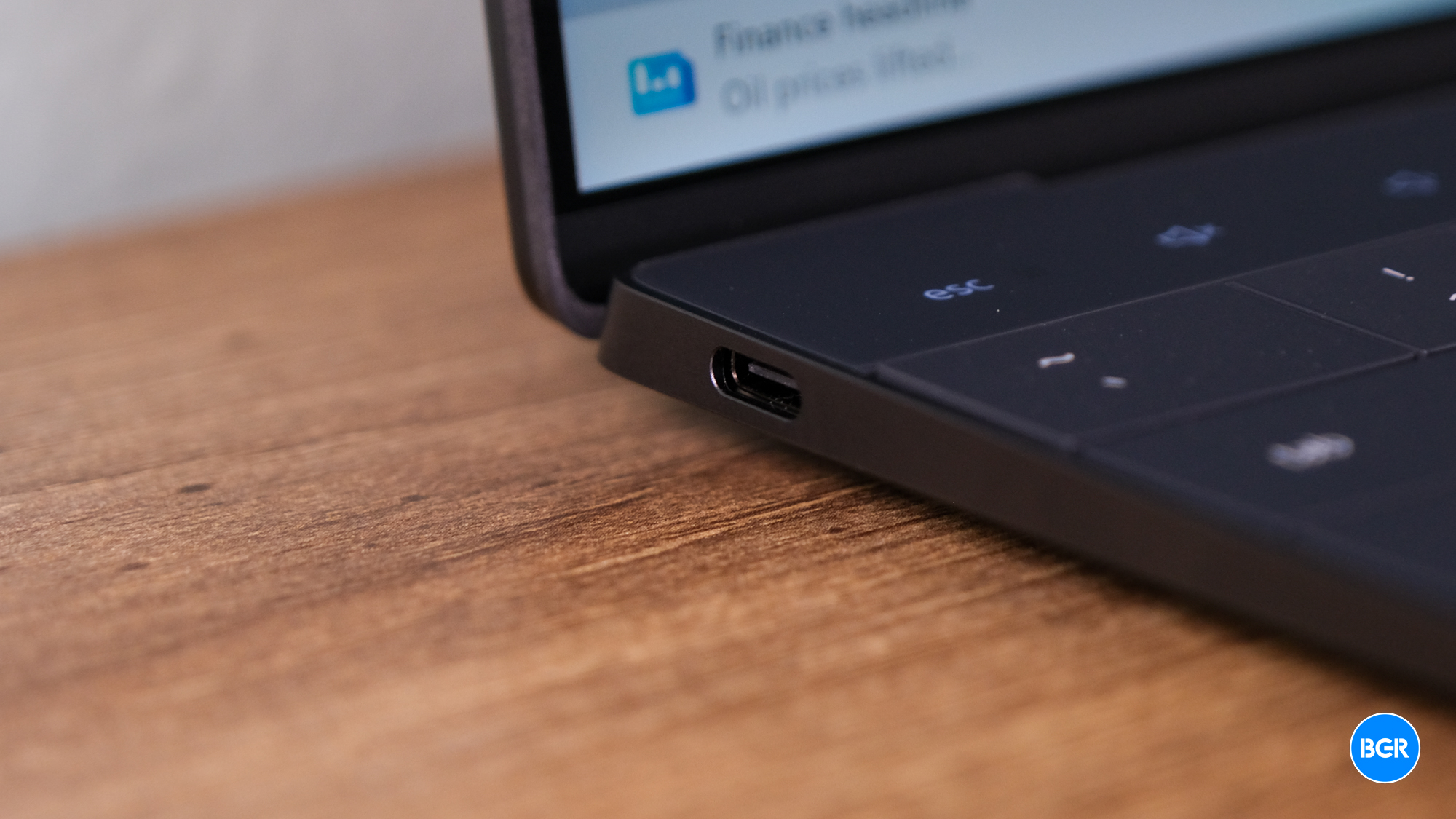
It’s great to see that ARM-based processors on Windows are finally catching up to Apple. Apple has been head and shoulders above the competition for years now, leaving Windows users out of the fun. The big push to Windows on ARM has seen many developers build native apps for Windows on ARM, and even those that haven’t yet seem to work mostly fine.
Our benchmarks confirm this excellent performance. In GeekBench 6, the laptop achieved a single-core score of 2,669 and a multi-core score of 13,987. That’s not quite as impressive as the M3-equipped MacBook Air in single-core performance, but it is better in multi-core performance. That said, the M4 is out now — and while it’s only available on iPads for now, those iPads are scoring very highly. The M4 iPad Pro is far ahead in single-core performance, and about on-par in multi-core performance.
Of course, the M3 and the M4 are only Apple’s entry-level chips. Apple also has Pro, Max, and Ultra variants of its chips, which do perform better than the Snapdragon X Elite. But again, this is only the first generation of Snapdragon X Elite chips, and there’s no reason to assume that Qualcomm won’t expand its lineup with more powerful options down the road.
A long-lasting battery
The big promise of ARM-based chips doesn’t necessarily relate to performance; it relates to power efficiency. With better power efficiency, laptops can perform better while using the same or less power. The trade-off is that ARM-based laptops typically offer much better battery life than their x86 cousins.
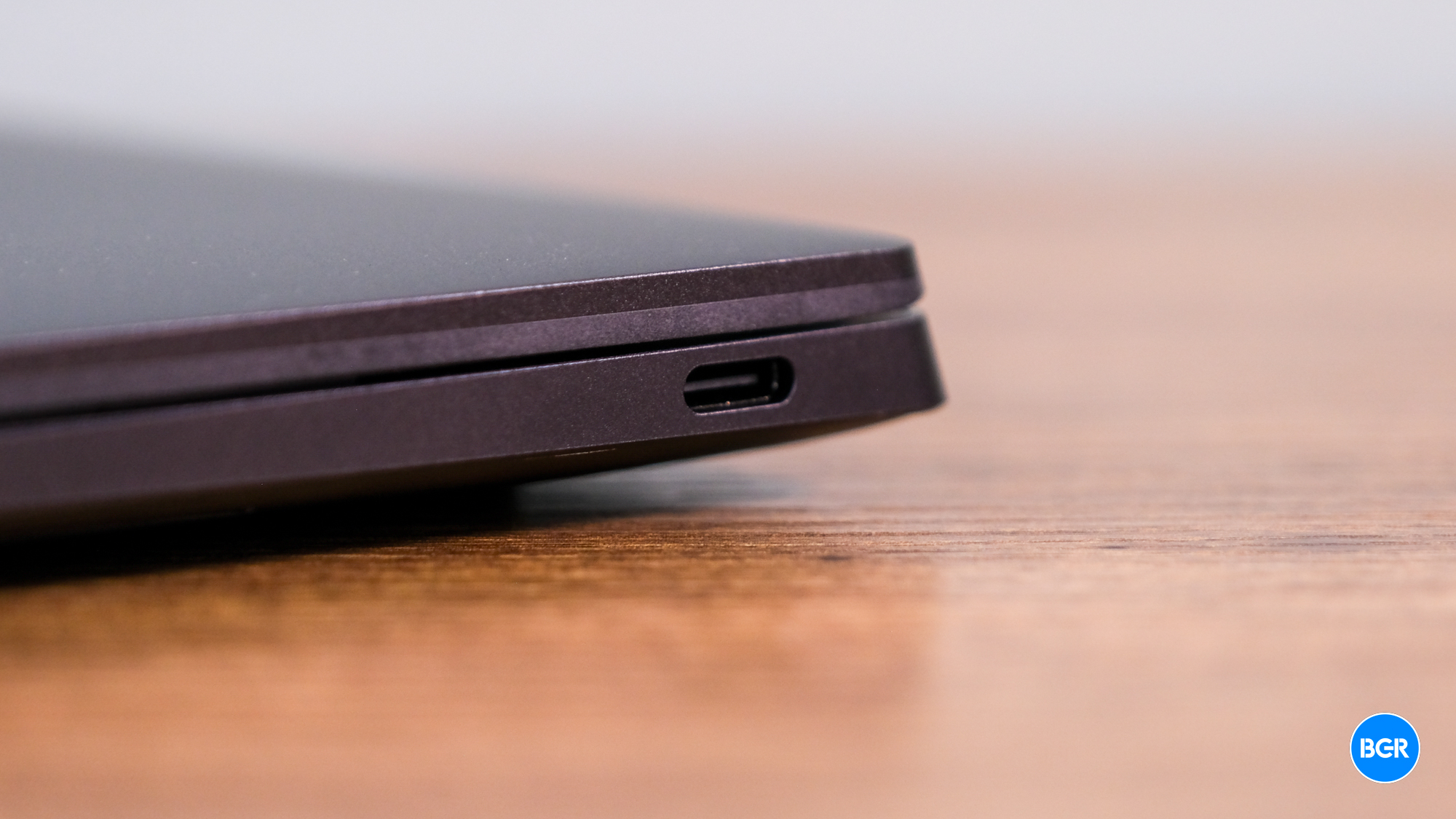
Indeed, Dell promises up to an impressive 27 hours of battery life from the XPS 13 (9345). Sure, that figure is largely based on video playback, but the fact remains that the XPS 13 (9345) will deliver excellent battery life overall. I was easily able to get through a full day of work with the XPS 13 (9345), with battery remaining at the end of the workday. Your results will vary depending on how you use the laptop, but I think most will have a similar experience. That said, it still felt like the MacBook Air had better battery life overall.
Detailed webcam and better-than-expected speakers
Dell has ditched the low-quality 720p webcams, and it’s good to see. The 1080p webcam on the XPS 13 (9345) is relatively high quality, offering good detail and solid color production. It’s not incredible, but it’ll easily do the job for video chatting.
The speakers built into the laptop are better than I expected. The speaker system is made up of four speakers in total, including two tweeters and two woofers. The speakers get relatively loud while delivering decent clarity for such a thin and light laptop. They’re not as impressive as the speakers built into the MacBook Air, but we didn’t necessarily expect them to be anyway. Sure, you’ll have a better audio experience if you use headphones, but in a pinch, the speakers on the XPS 13 (9345) are pretty good.
Copilot and McAfee
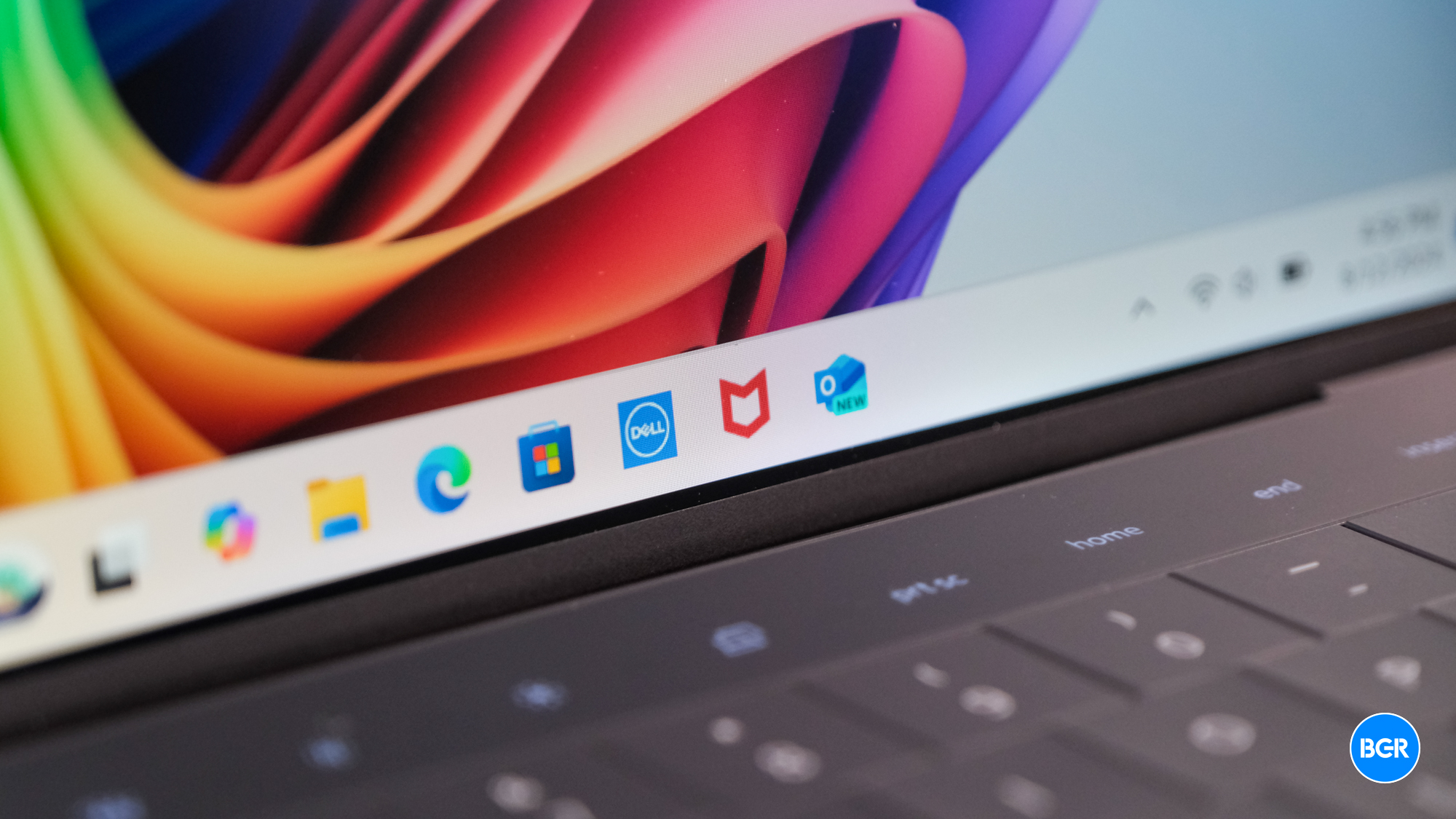
Alongside the switch to ARM-based chips, Microsoft is touting its AI features in what it calls Copilot+ PCs. These are AI-forward laptops that leverage the AI processing performance offered by the Snapdragon X Elite for deeper AI integration. If you’re anything like me, you’ll find that you won’t reach for these features all that often. Microsoft botched the rollout of features like Recall, and you may not find Copilot+ to be all that helpful, depending on how you use your laptop. Still, the building blocks for AI in PCs are here, and you can expect Copilot+ and AI in general to play a larger role in Windows going forward.
The rest of the software experience is pretty much what you would expect. Unfortunately, Dell and McAfee still have a partnership, and even if you untick the box to send your information to McAfee when you set up the laptop, McAfee will be pinned to your menu bar at the bottom. Apart from that, however, there aren’t too many additional apps clogging up your software.
Conclusions
The XPS 13 (9345) has a lot going for it. Much of that has to do with the power efficiency. The laptop performs very well while remaining cool and avoiding kicking on the fans too much. For basic productivity, it has great battery life, though it doesn’t quite reach the heights of the MacBook Air. I like the keyboard and touchpad, and while the display is only fine, it’s easily good enough for productivity.
That’s really where this laptop excels — it’s a high-end productivity machine with an excellent battery life, and if you need a laptop for productivity, you can’t do much better.
The competition
There was a big push for Snapdragon X Elite-equipped laptops at launch, and there are a number of different models on offer. The XPS 13 (9345) is the first one that I’ve tested, though, so it’s hard to compare directly.
I can say that I generally like the design of the XPS 13 better than most other Windows laptops, and I love how thin and light the XPS 13 (9345) is. That said, there are other options that have a better port selection, like the Microsoft Surface Laptop 7, and the XPS 13 (9345) certainly isn’t cheap.
Should I buy the Dell XPS 13 (9345)?
Yes. It’s a stunningly light laptop with excellent performance.








